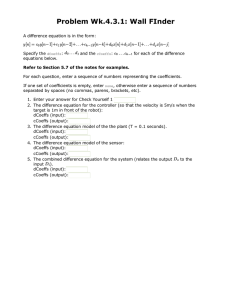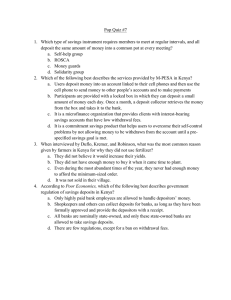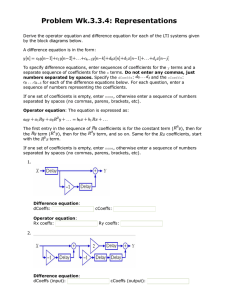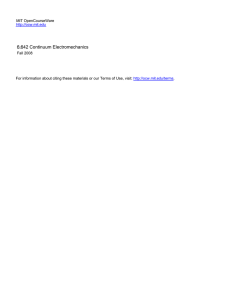Problem Wk.3.3.3: Finding systems
advertisement
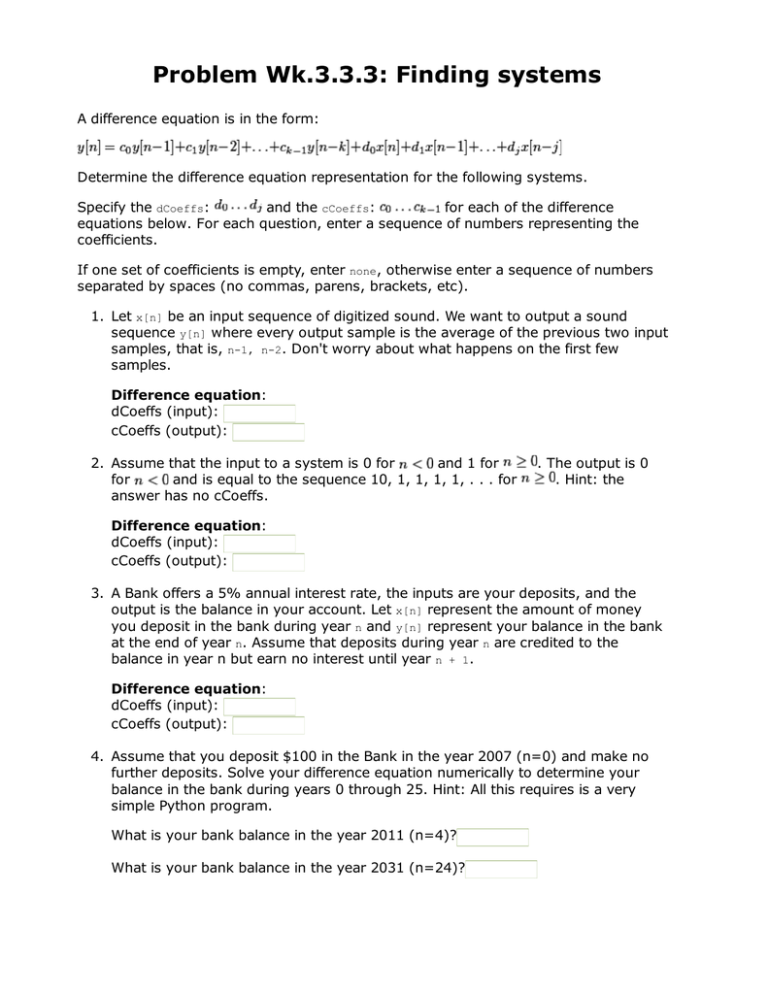
Problem Wk.3.3.3: Finding systems A difference equation is in the form: Determine the difference equation representation for the following systems. Specify the dCoeffs: and the cCoeffs: for each of the difference equations below. For each question, enter a sequence of numbers representing the coefficients. If one set of coefficients is empty, enter none, otherwise enter a sequence of numbers separated by spaces (no commas, parens, brackets, etc). 1. Let x[n] be an input sequence of digitized sound. We want to output a sound sequence y[n] where every output sample is the average of the previous two input samples, that is, n-1, n-2. Don't worry about what happens on the first few samples. Difference equation: dCoeffs (input): cCoeffs (output): and 1 for 2. Assume that the input to a system is 0 for for and is equal to the sequence 10, 1, 1, 1, 1, . . . for answer has no cCoeffs. . The output is 0 . Hint: the Difference equation: dCoeffs (input): cCoeffs (output): 3. A Bank offers a 5% annual interest rate, the inputs are your deposits, and the output is the balance in your account. Let x[n] represent the amount of money you deposit in the bank during year n and y[n] represent your balance in the bank at the end of year n. Assume that deposits during year n are credited to the balance in year n but earn no interest until year n + 1. Difference equation: dCoeffs (input): cCoeffs (output): 4. Assume that you deposit $100 in the Bank in the year 2007 (n=0) and make no further deposits. Solve your difference equation numerically to determine your balance in the bank during years 0 through 25. Hint: All this requires is a very simple Python program. What is your bank balance in the year 2011 (n=4)? What is your bank balance in the year 2031 (n=24)? MIT OpenCourseWare http://ocw.mit.edu 6.01SC Introduction to Electrical Engineering and Computer Science Spring 2011 For information about citing these materials or our Terms of Use, visit: http://ocw.mit.edu/terms.
